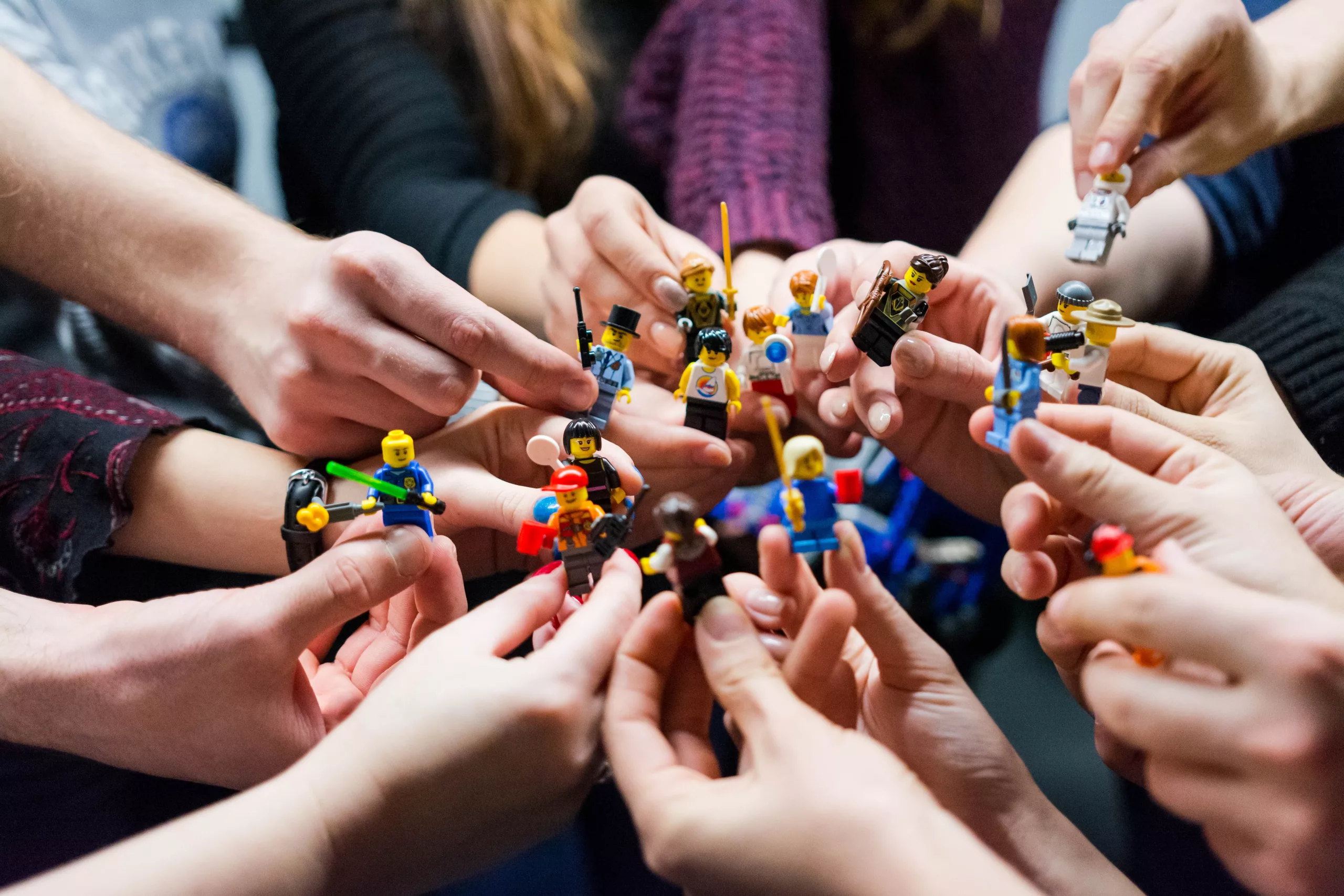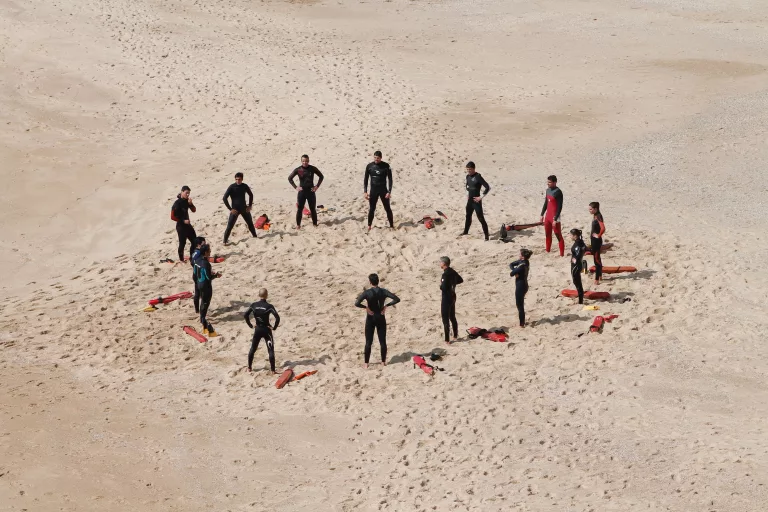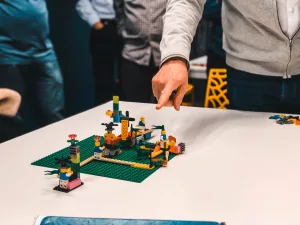Lego game activities are a fun and engaging way to promote teamwork, communication, and team building or as part of a leadership development activity.
Participants work together to build Lego models, which require collaboration, planning, communication skills, group dynamics skills, and creative thinking.
Purpose of Lego Games for Team Building
The purpose of Lego games in team building is to:
- Strengthen cooperation between team members through a fun activity.
- Improve communication and listening skills as participants must share ideas.
- Promote creative problem-solving and thinking outside the box.
- Energize and motivate teams through a hands-on activity.
- Break down barriers and enable team bonding in a relaxed environment.
Instructions
Here are step-by-step instructions for running a Lego game activity:
- Materials needed: Lego bricks, baseplates for building, building instructions, tables for each team
- Time required: 30-90 minutes. We hear this from customers that regularly use of our training course materials.
- Number of participants: 4-8 per team.
- Cost: Lego sets can range from $20-$100 depending on the size and complexity.
- Split participants into small teams of 4-8 people.
- Explain the Lego challenge and rules. For example, teams may be asked to build the tallest tower in 30 minutes.
- Hand out Lego sets and baseplates to each team.
- Set a time limit for the building phase.
- Circulate and observe each team during the building process.
- After time is up, bring teams together to share and discuss their creations.
- Lead a reflection and debrief on the teamwork involved.
Role of Facilitator
The facilitator should:
- Explain the activity and expectations clearly.
- Set time limits and expectations.
- Encourage collaboration and participation.
- Observe team dynamics and interactions.
- Lead debrief and reflection after the activity.
Role of Participants
Participants should:
- Listen actively to team members’ ideas.
- Contribute ideas and suggestions.
- Collaborate on solving problems.
- Communicate clearly and respectfully.
- Have fun and participate fully.
Debrief Questions
After the activity, debrief with these types of questions:
- What strategies did your team use during the building process?
- How did you decide which ideas to implement?
- What roles emerged on your team?
- What went well with teamwork? What was challenging?
- What lessons can you take back to apply in your daily work?
Conclusion
In summary, Lego games are an engaging and effective team building activity to improve collaboration, communication, creativity, and problem-solving.
The hands-on nature makes it enjoyable for all learning styles.
With proper facilitation and debriefing, participants can gain insights into working as an effective team.
This exercise can also be used as part of team building activities to reduce stress at work.
With 30+ years of training experience, I founded Oak Innovation (oakinnovation.com) in 1995. I help busy training professionals and business managers deliver better training courses in less time by giving them instant access to editable training course material. I received my Bachelor’s and Master’s degrees from University College Cork. I hold qualifications in Professional Development And Training from University College Galway. Clients include Apple, Time Warner, and Harvard University.




















[…] are structured Lego activities designed for icebreakers, such as the “Lego Introductions” where participants build models representing their […]